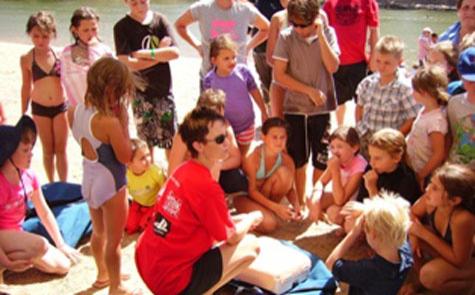Some 284 people drowned in Australian waters, waterways, pools and bathtubs in 2011/12, according to Royal Life Saving's annual report.
That's down from 310 in the previous year and the first drop since 2006/07, but still more than the 261 who drowned five years ago.
Royal Life Saving boss Rob Bradley says education campaigns are falling on deaf ears.
"Overall there has been absolutely no improvement in drownings in most age groups for five years now," he said in Canberra on Thursday, adding public awareness was still very low.
Men accounted for most of the drownings in the year to June 30, 2012 - 232 of the 284 victims.
One in four drownings happened in a river or creek (26 per cent) - although taking in all inland waterways, including lakes and lagoons, the figure jumps to 37 per cent.
The beach was the scene of 19 per cent and the ocean 15 per cent.
People aged 55 or over were most at risk, making up 34 per cent of total drownings, followed by the 15-24 bracket (16 per cent), the 35-44 group (13 per cent) and the 0-4 group (seven per cent).
Mr Bradley urged all Australians to be mindful that most drownings happened in rivers and lakes, not at the beach, and outside major cities.
Men were more likely to ignore warnings or put themselves in dangerous situations, he said.
But he said many of the 98 men aged 18-44 who drowned last year would have missed out on adequate water education.
Mr Bradley urged parents to take greater responsibility to ensure their kids were safe around water.
The number of children under five who drowned in bathtubs soared 75 per cent above the five-year average.
One-third of all drownings in that age bracket in 2011/12 were in bathtubs or spas.
Royal Life Saving, which directs most of its attention to preventing child drownings, said the problem was slipping under the radar, despite a lot of good work to prevent pool deaths.
All states and territories reported drownings, with NSW recording 105 of the total 284.








 Agree (0)
Agree (0) Disagree (
Disagree (








__small.png)










